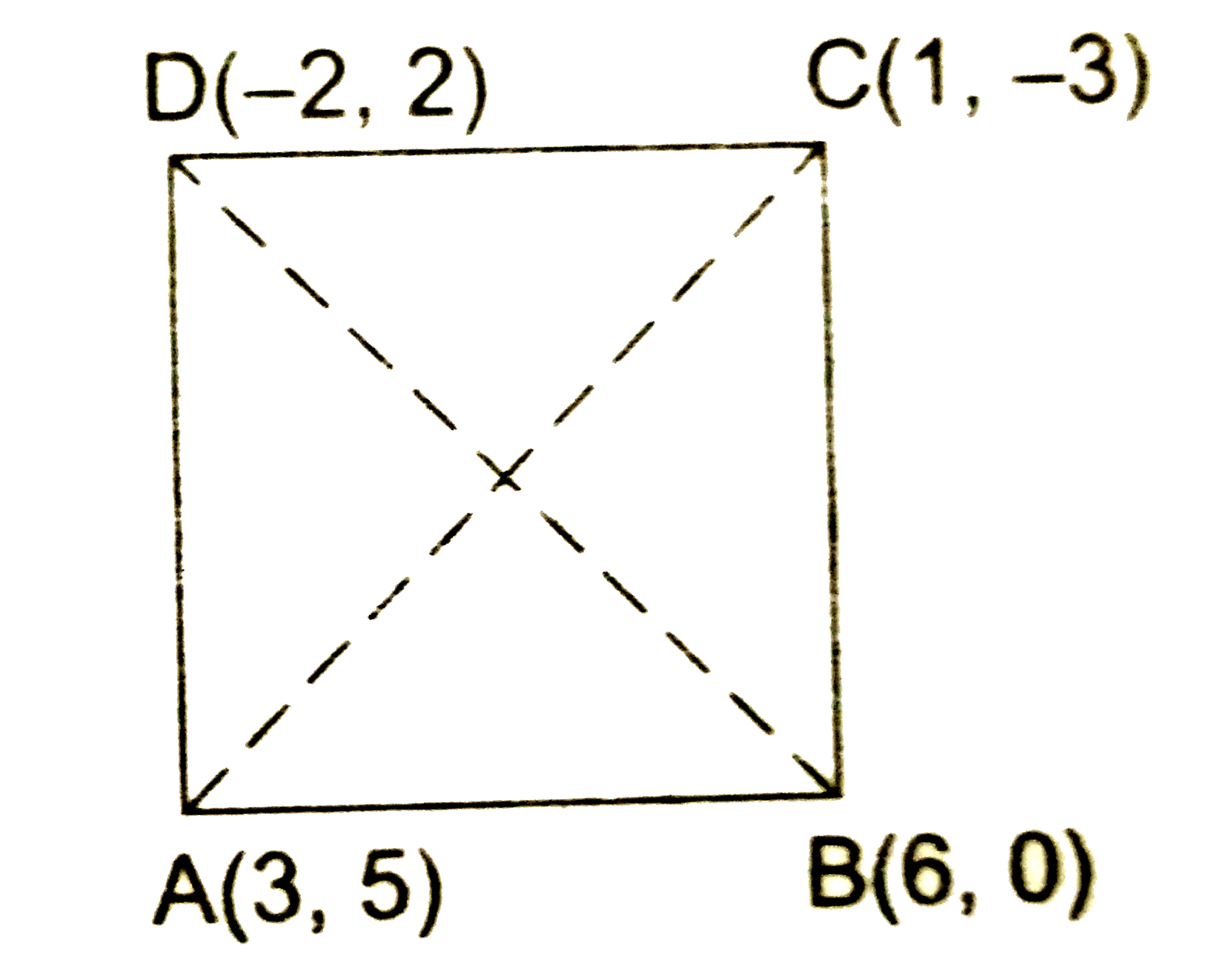Show that the points A(3, 5), B(6, 0), C(1, -3) and D(-2, 2) are the vertices of a square ABCD.

Let A (3, 5), B (6, 0), C(1, -3) and D(-2, 2) be the angular points of a quadrilateral ABCD. Join AC and BD.
Now, AB=√(6−3)2+(0−5)2
=√32+(−5)2
=√9+25=√34 units,
BC=√(1−6)2+(−3−0)2=√(−5)2+(−3)2
√25+9=√34 units,
CD=√(−2−1)2+(2+3)2=√(−3)2+52
=√9+25=√34 units,
and DA = sqrt((3+2)^(2) + (5-2)^(2)) = sqrt(5^(2) +3^(2))<br>= sqrt(25+9) = sqrt(34)units.<br>Thus,AB=BC=CD=DA.<br>Diag.AC = sqrt((1-3)^(2) + (-3-5)^(2)) = sqrt((-2)^(2) + (-8)^(2))<br>=sqrt(4+64) = sqrt(68) = 2sqrt(17)units.<br>Diag.BD = sqrt((-2-6)^(2) + (2-0)^(2))<br> = sqrt((-8)^(2) + 2^(2) = sqrt(64+4)<br>=sqrt(68) = 2 sqrt(17)units.<br>therefore diag. AC = diag. BD.
Thus, ABCD is a quadrilateral in which all sides are equal and the diagonals are equal.
Hence, quad. ABCD is a square.
Topper's Solved these Questions
- BOOK - RS AGGARWALCHAPTER - COORDINATE GEOMETRYEXERCISE - Exercise 6A34videos
COORDINATE GEOMETRY
- BOOK - RS AGGARWALCHAPTER - COORDINATE GEOMETRYEXERCISE - Exercise 6B38videos
COORDINATE GEOMETRY
- BOOK - RS AGGARWALCHAPTER - CONSTRUCTIONSEXERCISE - Test Yourself10videos
CONSTRUCTIONS
- BOOK - RS AGGARWALCHAPTER - HEIGHTS AND DISTANCESEXERCISE - Multiple Choice Questions (Mcq)25videos
HEIGHTS AND DISTANCES
Similar Questions
Show that the points A(3,5),B(6,0)mC(1,−3)andD(−2,2) are the vertices of a square ABCD.
View SolutionShow that the points A(2,1),B(0,3),C(−2,1)andD(0,−1) are the vertices of a square.
View SolutionShow that the points A(3,3,3,), B(0,6,3), C(1,7,7)and D(4,4,7) are the vertices of a square.
View SolutionShow that the points A(5, 6), B(1, 5), C(2, 1) and D(6, 2) are the vertices of a square.
View SolutionShow that the points A(1,0),B(5,3),C(2,7)andD(−2,4) are the vertices of a rhombus.
View SolutionShow that the points A(2, -1), B(3, 4), C(-2, 3) and D(-3, -2) are the vertices of a rhombus.
View SolutionShow that the points A(3, 0), B(4, 5), C(-1, 4) and D(-2, -1) are the vertices of a rhombus. Find its area.
View SolutionShow that the points A(3, 1), B(0, -2), C(1, 1) and D(4, 4) are the vertices of a parallelogram ABCD.
View SolutionShow that the points A(1,0),B(5,3),C(2,7)andD(−2,4) are the vertices of a rhombus.
View SolutionShow that the points P(2,1), Q(-1,3) , R (-5,-3) and
S (-2,-5) are the vertices of a square .View Solution

